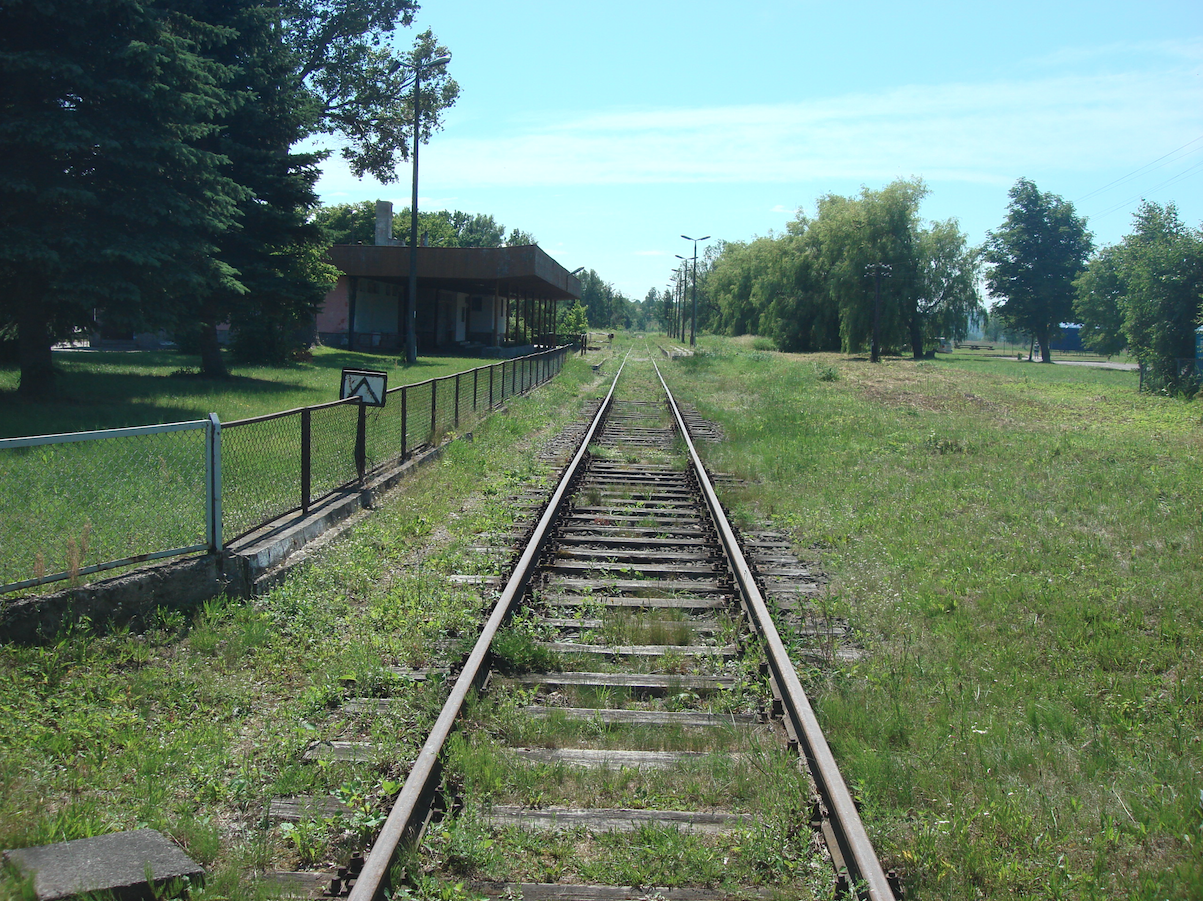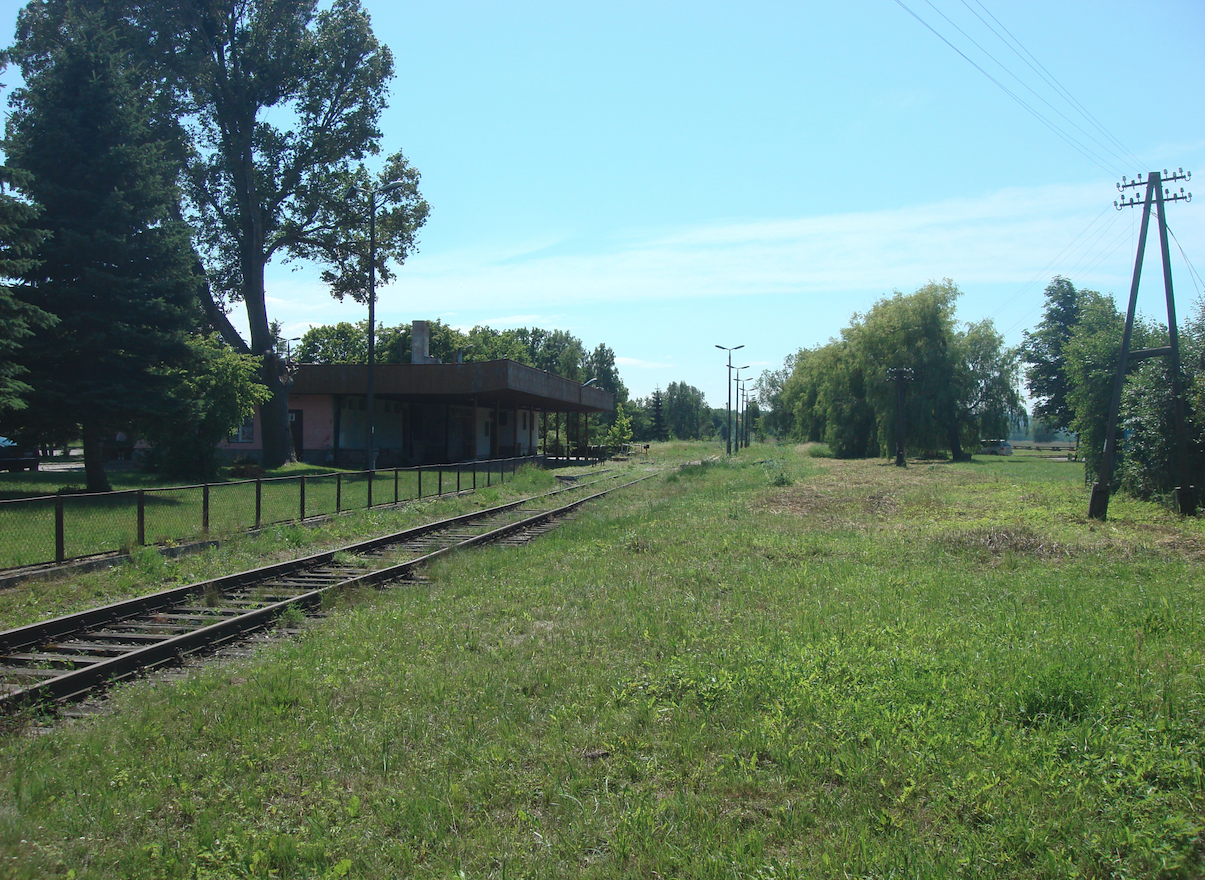Frombork 2022-10-20
Frombork Railway Station.
Geographic coordinates: 54.358N 19.676E.


Railway line No. 254.
The article describes the Elbląg - Braniewo railway route, ie the railway line No. 254. The line is 48.202 km long. In 1948, the line was No. 430. In 1988, the line was No. 503a and finally No. 254.
The line was designed as another branch from the Elbląg station north to Braniewo. It was an alternative route to Braniewo, which was called the Railway Railway Station. This name results from the route along the coast of the Vistula Lagoon. The German name is Haffuferbahn. The designers intended the line to connect Elbląg with Królewiec and it was. In the period 1897-1899, the section from Elbląg to Braniewo was built, where the Nadzalewowa Railway joined the Eastern Railway. A private joint-stock company was set up in Królewiec to build the line. The concession to build the line was obtained on December 24, 1897. In May 1899, the Elbląg - Frombork section was ready, and in September 1899, the Frombork - Braniewo section was commissioned.
At that time (1899), work was completed on the construction of two new stations in Elbląg: Elbląg Miasto and Elbląg Angielskie Source. The Elbląg Miasto station was located at today's Skwer Ofiar Sprawy Elbląskiej street. In 1901, a small but rich, multi-block, three-story station building was put into use. As a result of the war, the station was destroyed and then rebuilt in a simple form, using the preserved foundations. Currently, the station level is a parking lot. Railway traffic through the Elbląg Miasto station was stopped in 1958, and the section running through the city was dismantled in 1982. At the same time, the Elbląg Angielskie Source station was built near today's Pilawska Street.
The problem is that the section of the railway line Elbląg (East Elbląg) - Elbląg Miasto - Elbląg Angielskie Source ran through the center of Elbląg, therefore in 1982 this section was dismantled.
The Nadalewowa Railway line was very important for the development of the region. It connected two important cities in Prussia: Elbląg and Braniewo. The line was heavily used. Agricultural produce, fish, wood, coal and steel products were transported. Up to 400,000 passengers per year were transported. Among the passengers there were not only residents but also vacationers (holidaymakers). In Tolkmicko and Frombork, holidaymakers changed to ships and sailed to Krynica Morska.
During the Great World War, the railway line and the entire region avoided great damage. After the war, the goods and passenger traffic revived quickly and even increased. It was planned to build a second track. At the beginning of 1945, as a result of hostilities, some railway structures were destroyed. The bridge over the Pasłęka river near Braniewo was blown up. Fortunately, the railway line was not dismantled by the Soviet trophic troops. The reconstruction of the line from the war damages lasted until 1949. The line was incorporated into the assets of PKP. The line for the Polish Economy was of little importance and functioned as a local line. Due to the proximity of the state border with the CCCP, the beautiful area of the Vistula Lagoon could not develop properly. The outlays for the maintenance of the railway line were small. Likewise, the expenditure on road roads was small. Throughout the period of the Polish People's Republic, the railway was the only means of transport for the inhabitants of the region. Inhabitants used passenger trains to commute to work in plants in Elbląg. It was only after 1989 that tourism began to develop in the area. Especially Frombork has become a frequent destination for tourists.
In the period 1975-1982, the Elbląg railway bypass was built, shifting train traffic to the western part of the city: Elbląg - Tropy - Elbląg Zdrój.
In the 90s, Polish society began to grow richer. More and more families could afford their own car, which often commuted to work in Elbląg. The number of passengers on the line was falling. The number of connections was limited from 6 to 2 pairs of trains. At the beginning of 2006, there was only one pair of trains running, which completely eliminated the possibility for people to use rail transport to travel to school and work. On April 1, 2006, passenger trains were suspended. From now on, only special, tourist trains can be found on the trail. In the period 2010 - 2013, tourist trains ran on the route, only in the period Saturday - Sunday. The main operator of these trains was the Pomeranian Society of Iron Railway Enthusiasts. In June 2015, information about the possible physical liquidation of the trail appeared. The main argument is the lack of funds for the maintenance of the trail, let alone for repairs. To date (2022), line No. 254 physically exists.
The original route of the route: Elbląg City - Elbląg English Source - Tolkmicko Railway Station - Frombork Railway Station - Braniewo Górna Gate - Królewiec.
The current route of the route: Elbląg (former East Railway Station) - Elbląg Zdrój (former Elbląg English Spring) - Rubno Wielkie - Jagodno - Elbląg House - Nadbrzeże - Suchacz Castle - Kadyny - Tolkmicko - Święty Kamień - Frombork - Braniewo Gate - Braniewo.
Written by Karol Placha Hetman
